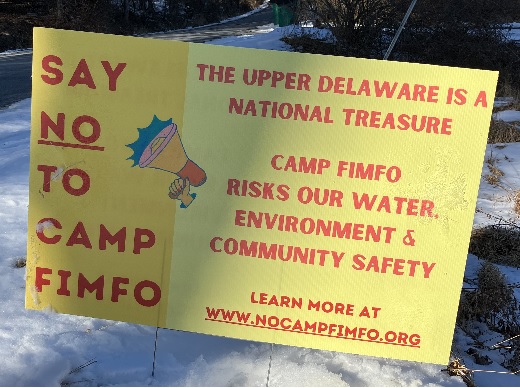PA Act 13 Injunction Granted
August 22, 2012Anti-Fracking Protesters Confront PA Gov During Kayaking PR Trip on Endangered River
August 27, 2012By Alison Rose Levy, AlterNet, August 25, 2012
In late June, Governor Andrew Cuomo leaked a plan to permit gas companies to frack five counties in New York’s Southern Tier. Confirmation of a final plan is expected after Labor Day. With no assurance that fracking won’t be permitted elsewhere once in the state, Cuomo aims to compromise between gas company lobbyists, pressing to drill before land leases expire, and citizens, 53% of whom are concerned about fracking’s impact on New York. In response, a coalition of organizations have planned, “Don’t Frack New York,” a mass march and rally in Albany on Monday, August 27th.
Fracking watchdog experts interviewed on my radio show, Connect the Dots, claim that neither Cuomo nor New York’s Department of Environmental Conservation (DEC) accurately foresee fracking’s consequences, with Cuomo’s compromise potentially compromising his future presidential hopes. The DEC has yet to respond to nearly 78,000 public comments on its proposed fracking guidelines, says Wes Gillingham of Catskill Mountainkeeper. “If New York launches shale gas permitting without first doing a comprehensive review of its health consequences or carrying out some real due diligence as to whether there is any reality to the claimed economic benefits of gas fracking, New York would make itself vulnerable to a range of unfolding impacts that could recoil on the State with great social and economic cost, said Albert Appleton, a former Commissioner of the New York City Department of Environmental Protection and an international consultant on environmental sustainability.
Fracking is opposed by the New York State Assembly and its Speaker, Sheldon Silver. According to independent polls, a majority of New Yorkers oppose it, with 72% asking for studies first. In the regions which the Governor says “want it,” opposition is fierce, say regional organizers. The proponents are “local town boards ruled by a handful of lease-holders hoping to profit,” says Frack Action’s Julia Walsh. In several instances, boards have passed unannounced back room pro-fracking resolutions that disenfranchise their communities. In neighboring Pennsylvania, history shows that once regions experience fracking’s downsides, the opposition is amplified to peak decibels by one-time adherents, disaffected land lessors, and the formerly neutral.
What Could Go Wrong?
Cuomo’s current popularity could “nose dive if he binds his political future to a practice that predictably provokes ever-mounting opposition,” says David Braun of New Yorkers Against Fracking and United for Action. Moreover, the outcry is likely to arise, just as Cuomo jogs into a Presidential run, predict those familiar with the timing of fracking aftermaths. In addition to the demonstrated risk of chemical and methane migration into water aquifers, these predictably include measurable statewide air quality declines; threats to the State’s organic agriculture and allied businesses (currently supplying one third of the organic products used nationally); increased disease incidence; more foreclosures; and higher crime rates.
Independent economic analysts like Deborah Rogers of the Energy Policy Forum point to the well-documented economic decline in all regions with extraction industries. Some common features, says Rogers, are the “boom and bust” cycle that produces temporary jobs, mostly filled by skilled out of state workers; bankruptcies, the losses of property values, businesses, and tax bases; the refusal of banks to issue mortgages on leased lands; the denial of insurance, as well as the state-wide tax burden of covering costs for infrastructures, like roads and bridges, safety and regulatory compliance, and the increased need for emergency, crisis management, police, and medical services. According to Rogers, extraction also predictably weakens or destroys existing robust industries, like tourism, food, and agriculture.
Hazen and Sawyer, the environmental consulting firm which assessed the potential risk to the water sources and infrastructures that supply New York City, said that current parameters also represent a “compromise” because they were devised according to political, not environmental calculations.
Rogers points to recent findings that “less than 6% (of wells drilled) actually met minimum economic thresholds.” Last Spring, the Securities and Exchange Commission (SEC) downgraded hypothetical gas output projections, proffered by industry when it introduced the novel form of fracking (that uses hazardous chemicals) in 2004. Since the actual gas output is less than projected, this downgrade raises the need to expand drilling locations to meet the industry’s promise of increased supplies. Despite industry claims to provide “energy independence” for the U.S., these more limited supplies are slated to be shipped oversees for high profit sales via new ports refurbished or built for mass export.
“If Cuomo moves forward with fracking, he will be risking his political future,” activist and actor Mark Ruffalo predicts. Neither providing “energy independence” nor compensating for the deficits it creates—which include the appropriation of public water for use in drilling—the decision to frack New York could hang heavily and persistently on Cuomo like the albatross from the Rime of the Ancient Mariner. “The economy, jobs and farming all will be better served by a bold and visionary move to a renewable energy policy for the State,” says Ruffalo. “That’s what would put Cuomo on the path to the presidency and the right side of history.”
If instead Cuomo’s fracking compromise winds up stalling his presidential run, the Governor could have more time to contemplate the Rime’s core message, “Water, water, everywhere, nor any drop to drink.”



